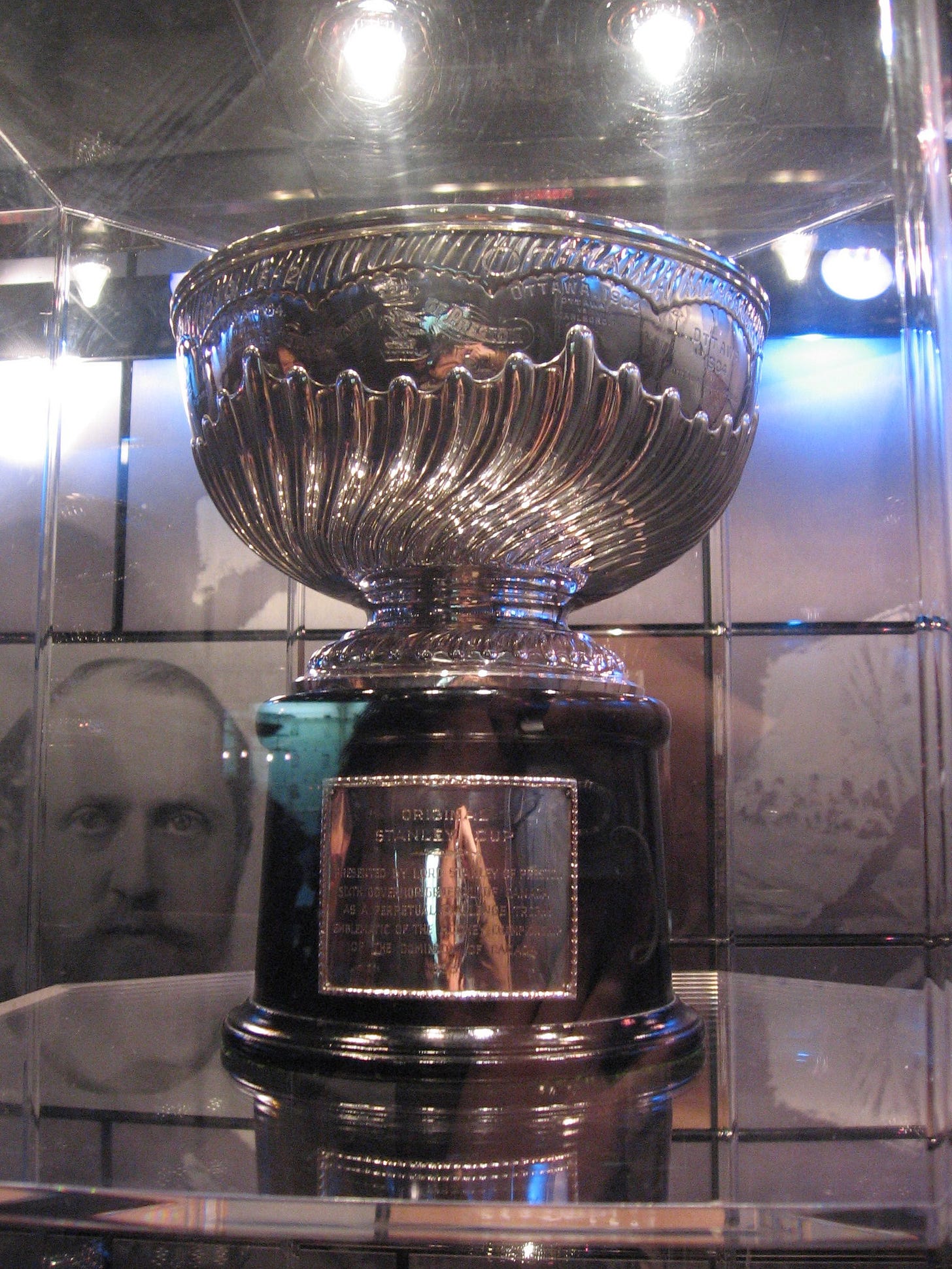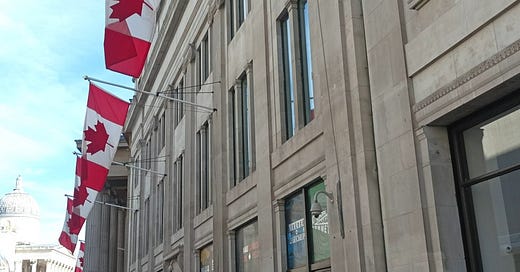Five... Places to See Pieces of Canadian History in London
There's more than meets the eye, eh?
Hi and welcome to your weekend newsletter… 🍁
This edition’s a handful of pieces of Canadian history from over the centuries that you can still visit in London.
Of course there are some big ones left off the list here: Canada Memorial in Green Park, a sculpture by Montreal artist Pierre Granche, commemorating the Canadian servicemen and women killed during the first and second world wars; Canada Gate nearby, part of the Queen Victoria Memorial, and some statues of figures from Canadian naval and military history around London. But London’s also scattered with fragments of Canadian history that can sometimes fly under the radar.
Tangentially: this week’s also the last chance to catch a great exhibition of Canadian art in London: Shuvinai Ashoona at The Perimeter.
Tab Khan recently wrote about the Canadian Inuit artist over on Londonist: Urban Palette- describing the artworks on show as a ‘truly special’ collection portraying surreal worlds that draw on both Inuit myths, and also outsider perceptions of Inuit culture. It’s on till 26 April and tickets are free, but book them in advance.
128 Regent Street
Today it’s a luggage shop, but back in 1892, this building was the storefront of silversmiths GR Collis: the same silversmiths where Governor General of Canada and ice hockey enthusiast Lord Stanley dropped in to buy a certain trophy.
Earlier that year he’d sent a letter to be read out at a meeting of the Ottawa Athletic Association, laying out his vision for a pan-Canadian hockey championship.
‘I have for some time been thinking that it would be a good thing if there were a challenge cup which should be held from year to year by the champion hockey team in the Dominion.
There does not appear to be any such outward sign of a championship at present, and considering the general interest which matches now elicit, and the importance of having the game played fairly and under rules generally recognized, I am willing to give a cup which shall be held from year to year by the winning team…’
And 128 Regent Street is the place he advanced his plans from a vision to a solid silver reality, buying the trophy for ten guineas. There’s a plaque at the address, commemorating the moment the Stanley Cup championship bloomed into existence.
Lord Stanley of Preston, it reads, purchased the original Stanley Cup from a silversmith on this site in 1892 for the people of Canada to commemorate amateur and professional ice hockey…

Canada Gallery
Canada House is hard to miss when you’re on the hunt for Canadian connections in the city, with a forest of maple leaf flags flying outside and embedded right in the heart of an area that used to be known as Little Canada:
Next door is 2-4 Cockspur Street, now part of the Canadian High Commission, but built in the 1920s by the Sun Life Assurance Company of Canada. During the second world war it became the Canadian Military HQ in Britain.
At 62-65 Trafalgar Square, just across the road from Canada House, is the Canadian Pacific Building, one of two Canadian railway companies that had headquarters in the area for decades.
The other (originally the Grand Trunk Railway, later becoming the Canadian National Railway) was based at 17-19 Cockspur Street; the building still has the crests of Canada’s provinces carved in the stonework.
So you can still see a whole lot of Canadian history, crests and architectural pageantry just by wandering the streets around Trafalgar Square, and you can take free monthly tours of Canada House itself, which is as head-to-toe Canadian-designed and furnished as you’d expect: pieces on display include a light installation by Vancouver designer Omer Arbel, seating by Québec artist Kino Guérin, and a table designed by Yukon-born First Nations craftsman Mark Preston.
But that’s all preamble, because the real reason to visit, imo, is the gallery inside the Canadian High Commission, dedicated to the promotion of Canadian art of all regions and eras. Right now you can see an exhibition of work by Ningiukulu Teevee, an Inuit artist from Kinngait, the same hometown as Shuvinai Ashoona; other exhibitions in the last couple of years include an exploration of 1970s and 1980s Canadian hip-hop’s visual art and legacy and an exhibition of work by Métis-Cree artist Jason Baerg exploring stories of Cree cosmology, ritual, urban migration and community.





